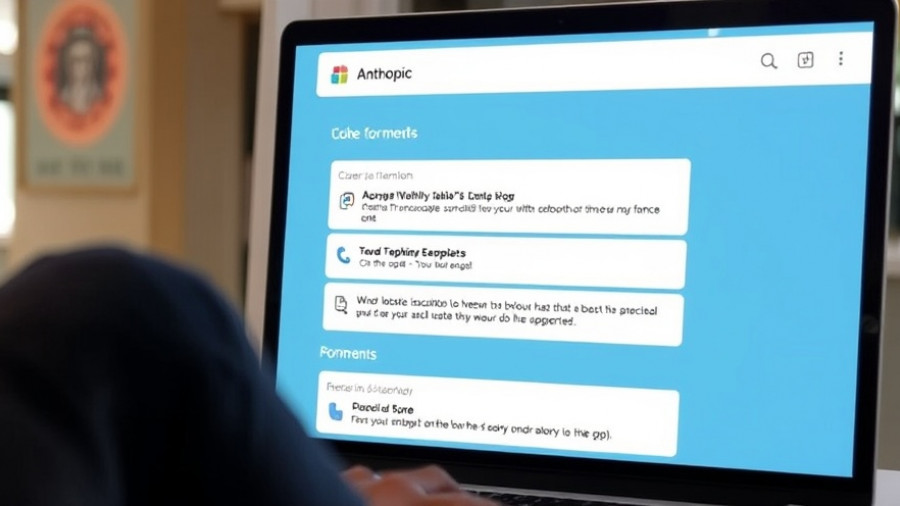
Microsoft’s Bold Move to Enhance Productivity with Claude AI
In an industry where artificial intelligence is reshaping productivity tools, Microsoft is taking a significant step by integrating Anthropic's Claude AI into its Microsoft 365 Copilot suite. This strategic alliance, announced recently, marks a pivotal shift for the tech giant, aiming to extend its capabilities beyond its existing partnership with OpenAI. By incorporating Claude models, users can expect advancements in features such as document summarization and data analysis, crucial for improving workplace efficiency.
Expanding Beyond OpenAI: A Strategic Diversification
Microsoft's integration of Claude AI not only improves productivity but also acts as a safeguard against overdependence on a single AI provider. Executives emphasize resilience as a key motivator for this diversification. With rivals and regulatory bodies keeping a keen eye on developments in AI, Microsoft's ability to leverage multiple AI models ensures enhanced performance while fostering innovation. Access to Claude Sonnet 4 and Claude Opus 4.1 is set to provide users with unique strengths in reasoning and creative contexts.
Benefits of Claude AI for Business Users
For enterprise clients, the update promises immediate advantages. Imagine utilizing Claude for crafting marketing content or conducting detailed analyses of financial data in Excel. Initial feedback reveals that these models excel in areas where their OpenAI counterparts might struggle, particularly in handling sensitive information thanks to additional safety measures built within the Claude architecture. As Microsoft gradually rolls out these features, users can expect a significant uptick in productivity.
Speculations on the Future of AI Collaboration
This integration raises exciting prospects for future collaborations and the dynamic nature of the AI landscape. With Microsoft’s partial pivot towards Anthropic, it hints at a broader strategy that could shape industry standards and practices, especially as interactions with different AI models come to define user experience. Furthermore, as competition for talent within the AI domain intensifies, companies like Microsoft and OpenAI may find themselves navigating new alliances and rivalries.
Regulatory Considerations in a Shifting AI Landscape
The regulatory environment plays a critical role in this transition. As agencies in the U.S. and Europe remain vigilant about potential monopolistic practices in AI, Microsoft's move to diversify may be perceived as a means to mitigate scrutiny and balance competition. By embracing a wider array of AI technologies, Microsoft positions itself not only as an innovator but also as a neutral platform conducive to attracting developers and partners.
The Road Ahead: Impacts on Workplace Adoption
Looking to the horizon, the implications of integrating Claude AI are vast. As Copilot's user base surges past millions, the anticipated acceleration in AI adoption within workplaces could revolutionize how businesses operate. With this tool, productivity will not just be augmented; it may transform tasks that seemed mundane into opportunities for creativity and innovation.
As technology continues to evolve, staying updated on such pivotal integrations like Microsoft and Claude's partnership becomes essential for anyone looking to leverage AI effectively in their professional activities.
 Add Row
Add Row  Add
Add 




Write A Comment